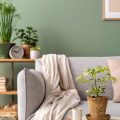Understanding American Minimalism
The Roots of Minimalist Decor in America
Minimalism as a design style has its roots in mid-century America, inspired by the simplicity of Scandinavian and Japanese aesthetics. After World War II, Americans began valuing functional, clutter-free spaces that reflected a sense of calm and order. This was a sharp contrast to the ornate styles of previous decades. The minimalist approach soon gained popularity, especially among city dwellers who wanted to make the most of smaller urban living spaces.
The Philosophy Behind Minimalism
At its core, American minimalism is about “less is more.” It’s not just about having fewer things; it’s about making intentional choices with your space and possessions. Simplicity, clean lines, and open layouts are key elements. Every item in a minimalist home has a purpose or brings joy. This philosophy encourages people to declutter, reducing stress and creating an environment where it’s easier to relax and focus.
Why Americans Love Minimalist Decor
Minimalist decor fits well with the fast-paced American lifestyle. Many people appreciate coming home to a space that feels peaceful and organized. There’s also a growing movement toward sustainability—choosing quality over quantity, and investing in timeless pieces rather than trendy items that quickly go out of style.
Key Features of American Minimalist Decor
| Feature | Description |
|---|---|
| Simplicity | Clean lines, neutral colors, and uncluttered surfaces define the look. |
| Functionality | Every piece serves a practical purpose and often offers storage or multi-use solutions. |
| Natural Light | Large windows and open layouts maximize sunlight for a bright, airy feel. |
| Quality Materials | Focus on durable materials like wood, stone, and metal for long-lasting appeal. |
| Personal Touches | A few meaningful accessories or artworks give personality without overwhelming the space. |
The minimalist trend in America is all about creating a home that feels open, inviting, and purposeful. By understanding these core ideas, you’ll be ready to start your own journey toward transforming your home with minimalist decor.
2. Choosing a Neutral Color Palette
Why Neutrals Are Key in American Minimalist Homes
One of the biggest secrets behind the calming and spacious feel of minimalist homes in the U.S. is a neutral color palette. These colors are versatile, timeless, and help create an open, serene environment. Neutrals also make it easy to switch up your decor without needing a full makeover.
Popular Neutral Colors in American Minimalism
American homeowners often choose shades that blend seamlessly with natural light and work well with wood, metal, or other simple materials. Below is a handy table showing popular neutral colors and their effects:
| Color | Effect | Best For |
|---|---|---|
| White | Makes spaces look larger and brighter | Walls, ceilings, trim |
| Beige | Adds warmth without being overwhelming | Living rooms, bedrooms |
| Gray | Crisp and modern; works with most accent colors | Kitchens, bathrooms, furniture |
| Taupe | Sophisticated and earthy vibe | Entryways, dining areas |
| Soft Greige (Gray + Beige) | Balanced and inviting; very on-trend in the U.S. | Open floor plans, family rooms |
How to Select Your Perfect Palette
- Start with Your Space: Look at the natural light in each room. North-facing rooms can feel cool—try warmer neutrals like beige or taupe. South-facing rooms can handle crisper whites or grays.
- Create Flow: Choose one main neutral for most walls and layer with different shades for trim, textiles, or furniture.
- Add Texture: If you’re worried about neutrals feeling flat, mix in textures like linen curtains or a jute rug to add interest.
- Pops of Color: Keep your main palette neutral but consider adding an accent chair or pillow in a muted blue or green for an American touch of personality.
The Takeaway: Calm and Flexibility
A neutral color scheme is the foundation of minimalist decor across the U.S. It creates a peaceful atmosphere that feels both fresh and flexible—perfect for busy American lifestyles where home needs to be both relaxing and practical.

3. Selecting Essential Furniture and Accessories
Choose Timeless Pieces That Speak to Your Style
When embracing minimalist decor in your American home, picking the right furniture and accessories is key. Instead of filling every space, focus on selecting pieces that are both functional and timeless. Think of items that can serve multiple purposes—like a sleek sofa with hidden storage or a simple dining table that can double as a workspace.
Quality Over Quantity: The American Minimalist Approach
Minimalism in the U.S. means prioritizing quality craftsmanship over having lots of stuff. Look for solid wood, durable fabrics, and neutral colors like white, beige, gray, or soft earth tones. These shades help create a calm atmosphere while making your space look larger and more open.
Popular U.S. Minimalist Furniture Trends
| Furniture Type | Recommended Styles | Key Features |
|---|---|---|
| Sofa | Mid-century Modern, Sectional | Clean lines, neutral colors, versatile layouts |
| Coffee Table | Glass Top, Natural Wood | Simple shapes, hidden storage options |
| Dining Table | Scandinavian, Industrial | Slim legs, light wood finishes, extendable design |
| Shelving | Floating Shelves, Open Bookcases | Minimal framing, wall-mounted for space saving |
| Accent Chair | Lounge Chair, Slipper Chair | Compact size, comfort-focused upholstery |
Avoiding Clutter: Accessorize with Purpose
Accessories should enhance your space without overwhelming it. In the U.S., popular minimalist accessories include ceramic vases, abstract art prints, and indoor plants like snake plants or succulents. Limit yourself to just a few favorite items per room to keep things feeling airy and uncluttered.
Tips for Accessorizing American Minimalist Spaces:
- Edit Ruthlessly: Only display items you truly love or need.
- Create Visual Balance: Group items in odd numbers (like three candles or two cushions and a throw).
- Add Texture: Use woven baskets or linen pillows for warmth without adding visual clutter.
- Let Light In: Opt for sheer curtains or leave windows bare to maximize natural light—a key aspect of American minimalism.
Selecting essential furniture and accessories isn’t about limiting your style; it’s about curating a home that feels open, welcoming, and uniquely yours while staying true to minimalist trends popular across the U.S.
4. Incorporating Smart Storage Solutions
One of the biggest challenges in achieving a minimalist home is keeping things clutter-free without sacrificing functionality. American minimalist decor often focuses on creative storage solutions that maximize space and maintain a clean, stylish look. Let’s explore some practical ideas inspired by modern U.S. homes.
Clever Built-In Storage
Built-in shelves, cabinets, and benches are popular in American minimalist design because they save space and blend seamlessly with your interior. Think about using the area under stairs for drawers or adding shelving around door frames to make use of vertical space.
Multi-Functional Furniture
Furniture that doubles as storage is a game-changer for small spaces. Consider coffee tables with hidden compartments or beds with drawers underneath. These pieces help you keep essentials out of sight but within easy reach.
Smart Storage Ideas Table
| Storage Solution | American Trend | Best For |
|---|---|---|
| Under-Bed Drawers | Maximizes unused space | Bedrooms, Guest Rooms |
| Wall-Mounted Shelves | Creates open, airy feel | Living Rooms, Kitchens |
| Entryway Benches with Storage | Keeps shoes and bags organized | Hallways, Mudrooms |
| Floating Cabinets | Saves floor space, easy cleaning | Bathrooms, Living Areas |
| Pegboards & Hooks | Customizable, flexible storage | Kitchens, Garages, Offices |
Declutter with Style
The key to American minimalist storage is making it look intentional. Use baskets made from natural fibers or sleek bins in neutral colors to keep items organized on open shelves. Label containers for a tidy, user-friendly system that fits right into your decor.
5. Personalizing Your Minimalist Space
Minimalism doesn’t mean your home has to feel cold or impersonal. In fact, adding your unique touch is what makes a minimalist space truly special and comfortable. Here’s how you can blend your personality into minimalist decor while keeping things clean and cohesive—just like many American homes do!
Choose Meaningful Local Artwork
Showcasing local art is a popular trend in the U.S., allowing you to support artists from your community while making your space stand out. Whether it’s a painting, a framed print, or even a handmade ceramic piece, choose artwork that resonates with you. Limit yourself to one or two pieces per room to keep the look uncluttered.
Tips for Selecting Art
| Type of Art | How to Display | Why It Works |
|---|---|---|
| Paintings/Prints | Hang on focal walls | Adds color & personality without cluttering surfaces |
| Ceramics/Sculpture | Place on open shelves or mantels | Brings texture and local flair |
| Photography | Create a single-photo gallery wall | Tells your story in a minimal way |
Add Eco-Friendly Elements
Sustainability is a big part of American minimalist trends. Bring in eco-friendly features like recycled wood furniture, organic cotton textiles, or potted plants. These not only reflect a mindful lifestyle but also add warmth and comfort without overwhelming the space.
Eco-Friendly Decor Ideas
- Bamboo Shades: Natural window treatments that soften light and are sustainable.
- Potted Plants: Low-maintenance options like snake plants or succulents enhance air quality.
- Recycled Materials: Look for items made from reclaimed wood or upcycled glass.
- Organic Fabrics: Use throw pillows or blankets made with organic cotton or linen for texture.
Keep It Cohesive with Color and Materials
The key to personalizing without cluttering is sticking to a simple color palette—think whites, grays, earth tones—and using consistent materials throughout your home. This helps all your personal touches fit together seamlessly.
Quick Tips for Cohesion:
- Select 2-3 main colors for your space (for example: white, navy blue, and natural wood).
- Repeat similar textures—like matte ceramics or woven baskets—in different rooms.
- Avoid overcrowding shelves; give each item room to “breathe.”
By thoughtfully choosing personalized accents and eco-friendly elements, you can create a minimalist home that feels uniquely yours—comfortable, stylish, and true to American trends.


